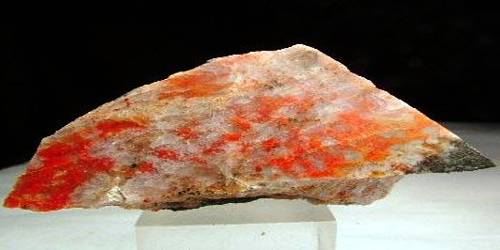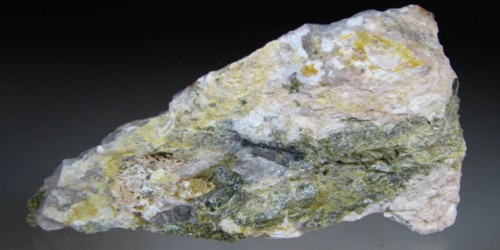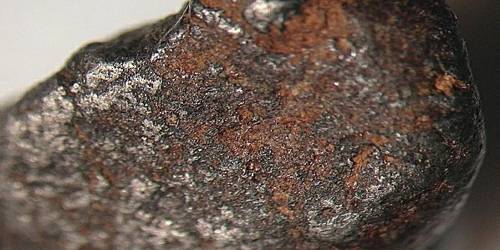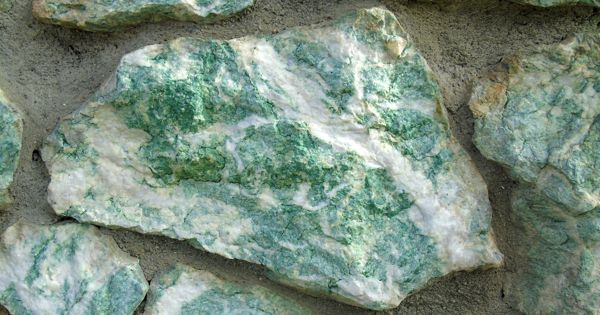Georgerobinsonite, named for George Willard Robinson, is a lead chromate mineral with formula Pb4(CrO4)2(OH)2FCl. The type specimen for georgerobinsonite was found in the Mammoth-St. Anthony Mine in Tiger, Arizona.
Georgerobinsonite is named for George Willard Robinson, A. E. Seaman Mineral Museum curator since 1996 and mineralogy professor at Michigan Technological University.
General Information
- Category: Mineral
- Formula: Pb4(CrO4)2(OH)2FCl
- Crystal system: Orthorombic
- Crystal class: Dipyramidal (mmm)

Fig: Georgerobinsonite
Properties
Georgerobinsonite is a soft, brittle mineral that forms crystals less than 0.1 mm (0.0039 in) across. The mineral possesses a pale-orange streak and an adamantine luster. It is most strongly associated with cerussite and diaboleite.
- Color: Orange-red
- Fracture: Uneven
- Mohs scale hardness: 2.5-3
- Luster: Adamantine luster
- Streak: Pale orange
- Density: 6.23 g/cm3 (calculated)
Occurrence
Georgerobinsonite is orange-red, transparent and has a pale orange streak and an adamantine luster, and it does not fluoresce under ultraviolet light. It exhibits very small, transparent crystals with a bright orange-red color. It was obtained from the Mammoth-St. Anthony Mine in Arizona in the 1940s and identified in 2009.
The sample was collected by Dan Mayers in 1943 or 1944. At this time, the mine was operating at a level where a number of exotic minerals have been discovered. The exact location of its origin is unknown, but it is likely from the Collins vein at the 500 level.
Information Source:
















